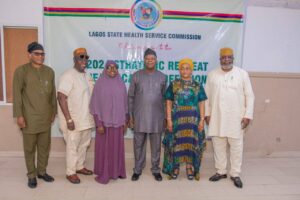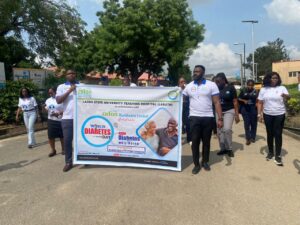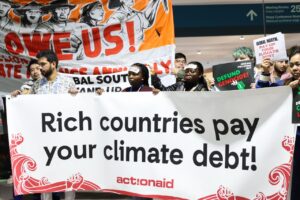
The Government of Senegal and the World Health Organization (WHO) today inaugurated a regional health emergency hub in the Senegalese capital Dakar to further bolster the African region’s capacity to respond swiftly and effectively to health crises and save lives.
Building on the lessons learned during the COVID-19 pandemic, WHO in Africa has over the past two years worked closely with countries in the region to establish decentralized emergency response systems to ensure an effective response to health crises. Under a transformative initiative, the Organization has embarked on a mission to establish three emergency hubs in the region.
The WHO Regional Emergency Hub in Dakar launched today is the second of its kind after WHO and the Government of Kenya launched the Nairobi health emergency hub in 2022. A health emergency hub in Pretoria is planned to be launched in 2024.
“This hub, with its various functions that include strategic pre-positioning of emergency health supplies, will enable the WHO Regional Office for Africa to support countries affected by health or humanitarian crises to respond faster and in a more structured manner,” said Amadou Ba, Prime Minister of Senegal.
The African region faces the highest number of health emergencies globally each year. As of November 2023, the region was grappling with more than 130 disease outbreaks. In West Africa’s Sahel region, more than 33 million people across six countries currently require urgent need of life-saving humanitarian assistance.
The goal of the regional emergency hubs is to substantially reduce – from an average of 45 days previously to three days – the time it takes to deliver a life-saving, effective emergency response to countries after a public health event has been declared. This is critical to make a meaningful difference in the plight of people affected by crises and to effectively control and end disease outbreaks.
The health emergency hubs also serve as centres of excellence, aiming to train more than 3000 African experts, equipping them with key technical skills essential for effective response to health emergencies. Each of the three centres has a specialized function, capitalizing on the comparative advantages afforded by each host country.
“I extend my heartfelt appreciation to all those who have contributed to establishing this essential facility,” said Dr Matshidiso Moeti, WHO Regional Director for Africa. “Our work through this hub aligns with the current global dynamic towards emergency preparedness, vaccine manufacturing, supply chain and effective tools to better respond to public health crises.”
The Senegal hub specializes in supply chain management, data analysis, innovation and information management, the Kenya hub focuses on the development of emergency medical personnel, while that in South Africa specializes in research and development, and genomic surveillance.
Since September 2022 when the temporary warehouse in Nairobi became operational the delivery time of critical emergency health supplies and equipment within the region has drastically reduced from at least three weeks to an average of three days. The deployment of responders has also been reduced.
The Government of Senegal has allocated five hectares of land for the construction of the Regional Emergency Hub in the outskirts of Dakar. The 8000-square-metre building has a 100-person office space. Additionally, the government has allocated a 5000-square-metre container yard and is facilitating speedy custom clearance processes for inbound and outbound supplies.
The hubs in Kenya and Senegal feature a warehouse for prepositioning medical supplies and equipment, a state-of-the-art training facility, an infectious diseases unit, an emergency response simulation facility and a training camp for health emergency first responders.
The Regional Emergency Hubs will work in close cooperation with partners and the broader United Nations ecosystem to support countries. WHO is also collaborating closely with the Africa Centres for Disease Control and Prevention to strengthen emergency preparedness and response and health systems on the continent.






